Do you know Kokedama? Those pretty little moss balls from which a lovely green plant grows? Very fashionable for a few years now, they can now be found almost everywhere! You have probably already seen them at your florist, in homeware shops and even in some restaurants. Originating from Japan, Kokedama brings a decorative, original, calm and natural touch to interiors. It is easy to make yourself. Some plants, such as ivy, adapt perfectly to this floral art.
Discover our technique and tips to make an ivy Kokedama.
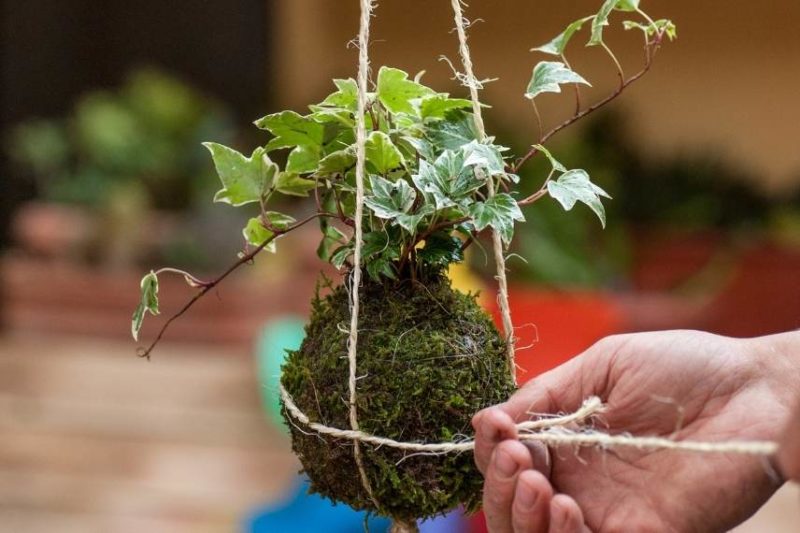
Ivy Kokedama looks stunning when hung with natural twine
Our ivy Kokedama can be placed on a flat support such as a slate or ceramic plate, a piece of wood, in a shallow dish or suspended by a string.
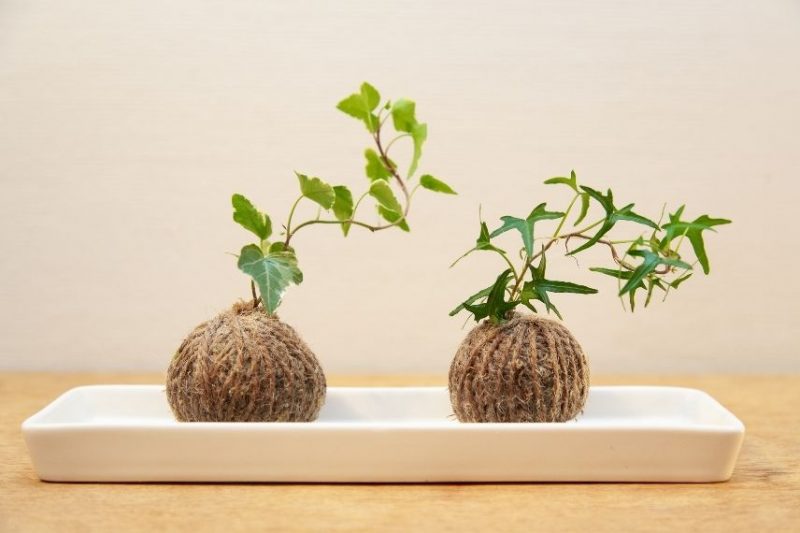
Moss on Kokedama can be replaced by natural twine, giving appearance of a large ball of yarn
For more: How to make a Kokedama?
Which variety of ivy to choose?
With its trailing stems and attractive evergreen foliage, ivy is perfect for a Kokedama, especially when suspended or placed on the edge of a shelf. Ivy needs little maintenance and suits almost any aspect except full sun. Easy to succeed with, ivy is the ideal plant to start Kokedama. Here are some noteworthy ivy varieties:
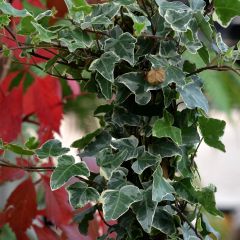
Hedera helix Glacier - Common Ivy
- Période de floraison October, November
- Hauteur à maturité 3 m
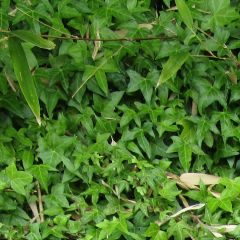
Hedera helix Needlepoint - Common Ivy
- Période de floraison October, November
- Hauteur à maturité 4 m

Hedera helix Goldheart - Common Ivy
- Période de floraison October, November
- Hauteur à maturité 8 m

Hedera helix Kolibri - Common Ivy
- Période de floraison October, November
- Hauteur à maturité 60 cm
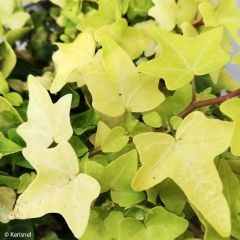
Hedera helix Jake - Common Ivy
- Hauteur à maturité 10 cm
What you need to make a Kokedama
- Seed or potting compost
- Plant moss
- Natural string (or green garden twine or nylon thread for an invisible effect).
- Ivy
- Vermiculite to ensure good drainage
- Clay (in Japan, Ketoh, a black clay, is mainly used).
- A shallow dish
- Rainwater
- A spray bottle
- A pair of scissors
Note: If you do not have clay, use a piece of winter fleece to hold the rootball.
Good to know: Moss can be found at florist shops and in craft stores. Moss is also available in nature, but take care not to collect more than necessary: moss grows very slowly and is sometimes essential to its natural habitat.
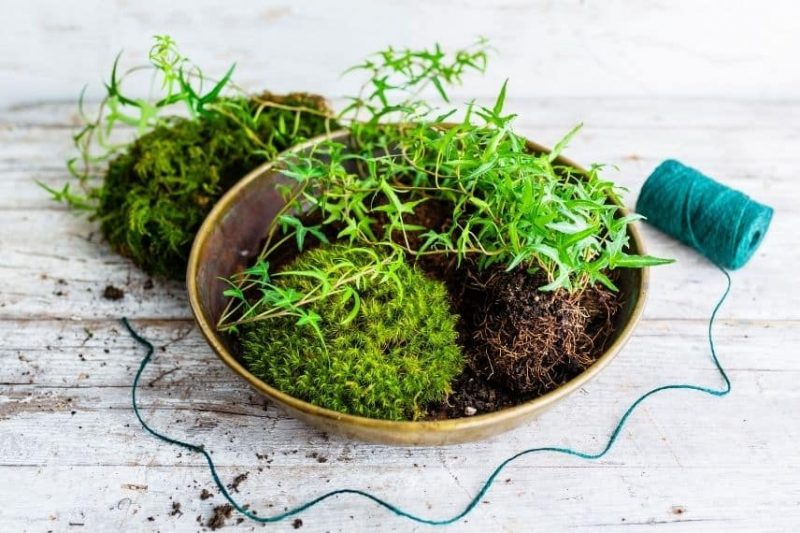
Essential materials to make a Kokedama
Steps to make a Kokedama
1- Mix 1/2 compost with 1/4 clay, 1/4 vermiculite and a little water to obtain a well-homogeneous, pliable paste. It should have the same consistency as modelling clay, slightly crumbly.
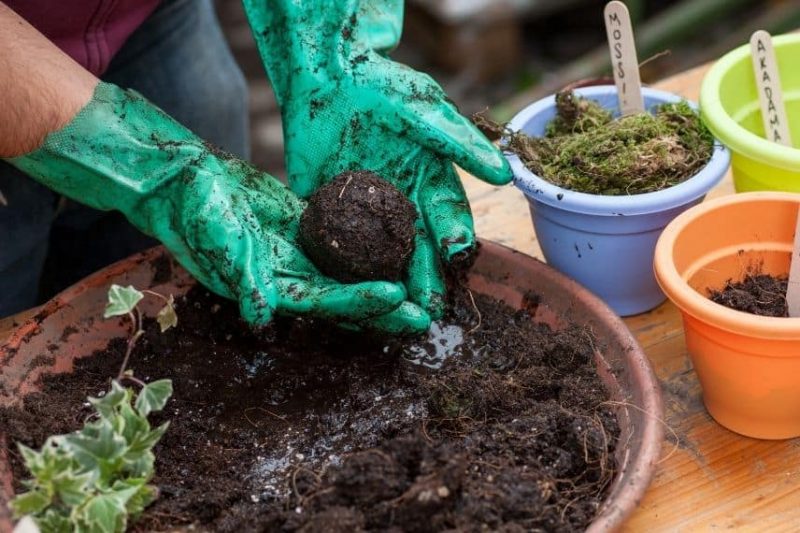
Mixture of compost, clay and vermiculite should be mouldable
2- Remove plant from original pot.
3- Gently tease roots apart. Remove as much soil as possible.
4- Encase plant roots with the substrate mix.
5- Form a ball by pressing gently but firmly.
Tip: If you do not have clay, wrap substrate ball in a small square of winter fleece, then tie fleece with twine or nylon thread.
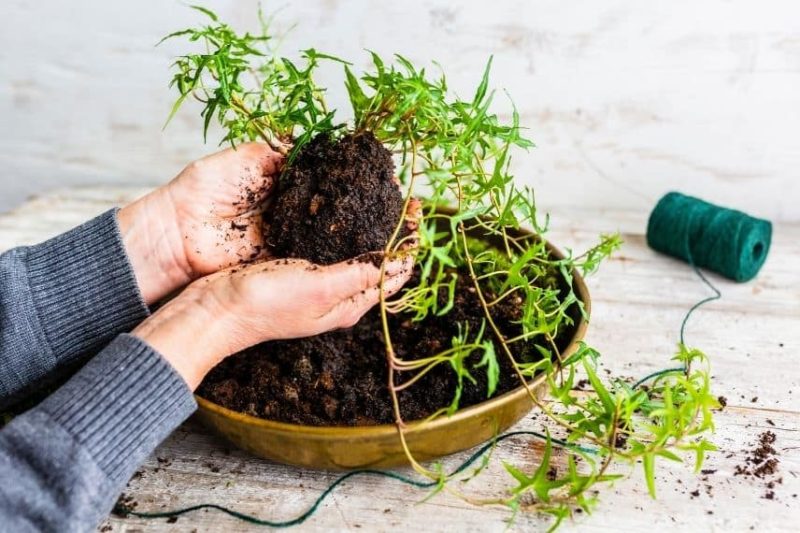
Shape a neat ball of substrate around ivy roots
6- Moisten plant moss with spray bottle, then gently cover exterior of ball.
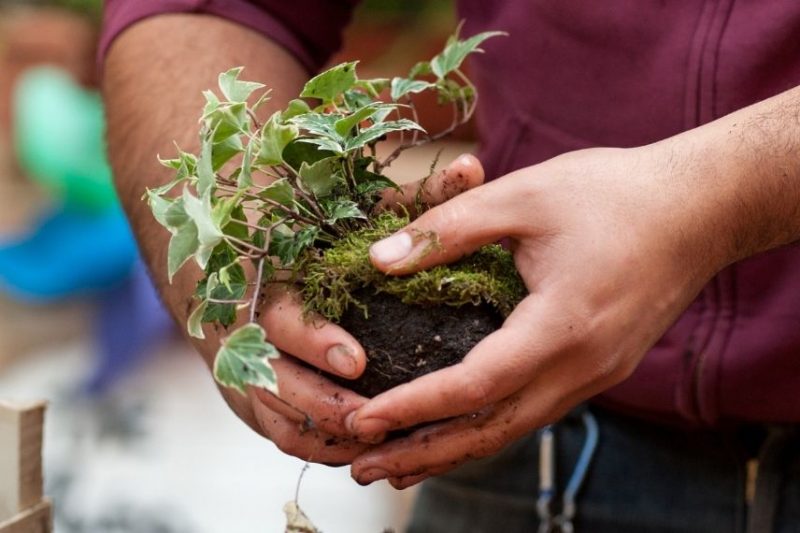
Wrap moss around sphere
7- To secure everything, wrap Kokedama with string or nylon thread.
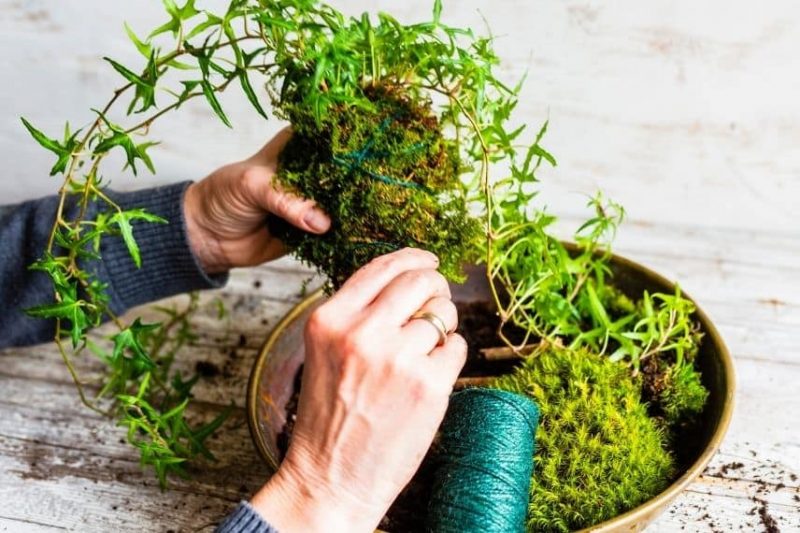
Secure ball with string
8- Add a piece of string if you wish to hang your creation.
9- Pour rainwater into a shallow dish and place ball in water for 5 to 10 minutes.
10- Remove from water and let drain for a few minutes.
11- Optional: use scissors to trim any untidy bits of moss protruding from sphere to obtain a uniform ball.
Caring for ivy Kokedama
Placement
- Ivy’s trailing habit is best showcased when Kokedama is suspended with string. It can also be placed in a pretty shallow dish or on a shelf edge.
- Your ivy Kokedama will tolerate most aspects, with a preference for shade. However, it will not appreciate direct sun. Ideally place behind a sheer curtain. Avoid positioning near a heat source such as a radiator, stove or fireplace.
- You can put Kokedama outside in summer, in shade or partial shade, avoiding sun during hottest hours. Full sun dries Kokedama too quickly and may cause plant decline.
Watering
- Moss prefers to remain slightly moist at all times, so mist with rainwater every 3–4 days in winter and once or twice daily in summer.
- Use watering as an opportunity to check whether ivy also needs water. To tell if water is needed, lift Kokedama. If ball is heavy, plant does not need watering. If instead it feels light, plant is short of water and should be placed for 10 minutes in a shallow dish containing rainwater. Generally this quick soak is done a little less than once a week in winter and every 2–3 days in summer.
- You can also fully submerge a Kokedama to thoroughly hydrate plant, but this tends to brown moss. Some gardeners use a small funnel to water plant from above to avoid moss browning.
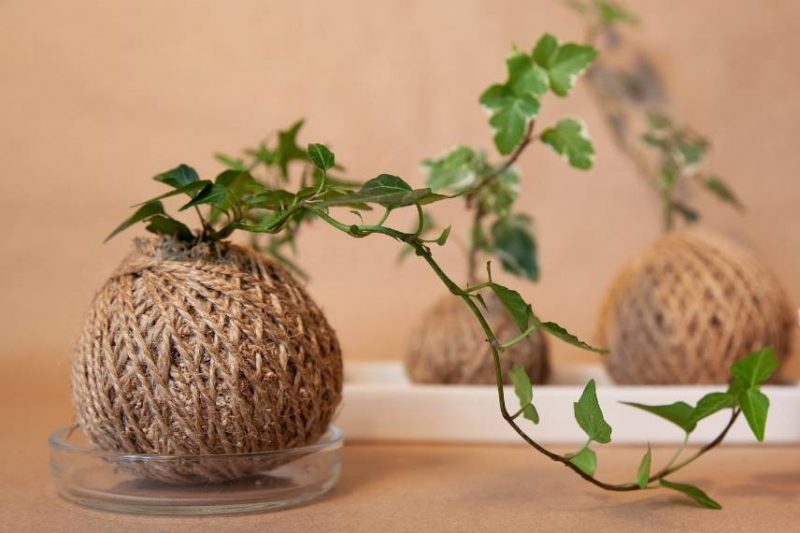
A few minutes in a shallow dish of water is enough to rehydrate your plant
Fertiliser and substrate change
Your ivy will have exhausted nutrients in its compost after one year. You will then need to make a new Kokedama. You may also pot ivy into a container suited to its size or plant directly in garden soil. Repotting is best done in spring. Apart from this substrate change, additional feeding is unnecessary.
Further reading
- Find all our ivy varieties
- For full details, read our complete sheet on ivy, Hedera helix: planting, growing, pruning































![[kokedama plant="ivy"] [kokedama plant="ivy"]](https://en.promessedefleurs.eu/blogwp/wp-content/uploads/2022/05/tuto-kokedama-de-lierre.jpg)
Comments